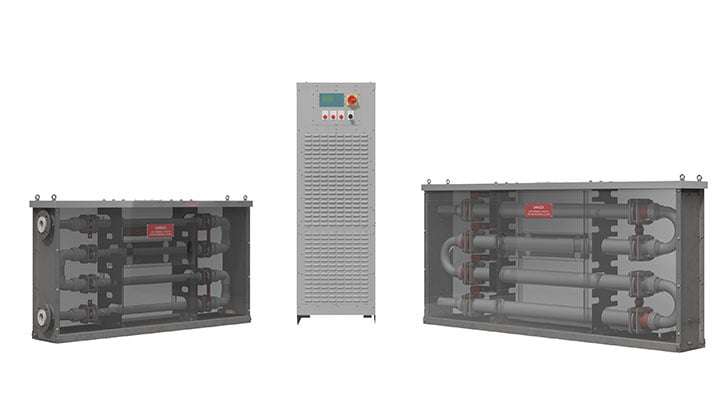The marine environment is challenging and unpredictable and requires a wealth of innovative technology to keep vessels operational, safe and running efficiently. Marine growth prevention technology is the perfect example of this. Darren Dale, Director of Product Management at Evoqua Water Technologies, highlights the critical role of marine growth prevention technology today.
The thousands of seagoing vessels in operation across the globe every day, from ships and tankers to military fleets, cruise ships and gas carriers, face a myriad of unique operating challenges. As well as the potential for extreme weather conditions, vessels face isolated operating environments, ongoing exposure to salt water and the risk of damage from biofouling. In any seawater-based process, biofouling will occur if there isn’t an effective prevention system in place. This includes macro-fouling from the likes of mussels, clams, oysters and sea anemones and micro fouling from bacteria, slime and algae.
Many vessels use seawater for cooling and in this instance, biofouling can significantly restrict the flow of cooling water to heat exchanger surfaces, accelerate localised corrosion by restricting oxygen diffusion and cause destructive turbulence at inlets. All of which can affect performance and shorten the life of affected equipment.
The most effective solution is electrochlorination, which produces, in-situ, a dilute solution of sodium hypochlorite which is injected into the water circuit for prevention of growth of these common marine species. But, innovation to stop the growth of marine species alone isn’t enough. The technology must guarantee reliability, low maintenance requirements and cost efficiency to meet the unique needs of the marine industry.
This is what led Evoqua to develop its Chloropac® systems, utilising concentric tube electrolysis cells. The system takes a small amount of water (28 usgpm or 6.5 m3/h) from a sea water cooling line which remains constantly under pressure. Part of the salt is converted to sodium hypochlorite as the water passes through the electrolytic cells. It is then injected into the water circulation, where the sodium hypochlorite prevents the growth of common marine species. This method enables vessels to stop purchasing, handling and storing potentially dangerous chemicals and reap cost and safety benefits.
Given the often isolated operating conditions of the marine environment, the technology is self-cleaning and has been designed to offer low ongoing maintenance requirements. This, coupled with a guaranteed long-life span, means minimal intervention from the vessel’s engineering team is required.
Today, marine growth prevention technology is working hard behind the scenes for thousands of vessels worldwide, preventing the damage caused by biofouling and ultimately helping to keep businesses moving.
Connect with Darren Dale on LinkedIn.

